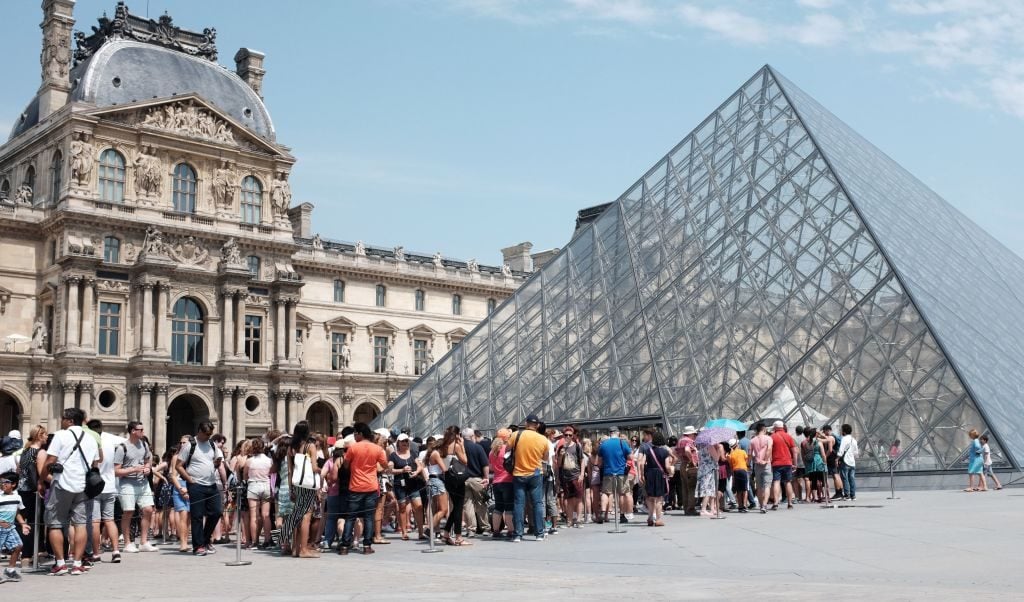In the middle of a pandemic, museums cannot exactly stage highly anticipated exhibitions that would normally have drawn snaking lines of tourists around city blocks.
Packed galleries as a metric of success? Those have evaporated amid uncertainty that could continue for months or more, as strict social-distancing measures remain in place.
And with damaged endowments and investment funds, the exorbitant costs and logistical nightmares involved in producing star-studded exhibitions—like the 2019–20 Van Gogh show at the Louvre, which saw one million visitors in just over four months—are more daunting than ever.
In short, as museums begin to slowly reopen, they are looking at a landscape that has changed completely, and the blockbuster trend—the product of a heavily trafficked world—faces an uncertain future.
“We have come out of a decade that celebrated globalism,” says Meta Knol, the director of the Museum de Lakenhal in the Netherlands, which staged “Young Rembrandt,” a major exhibition, in 2019. “And now we are seeing the flip-side of that.”
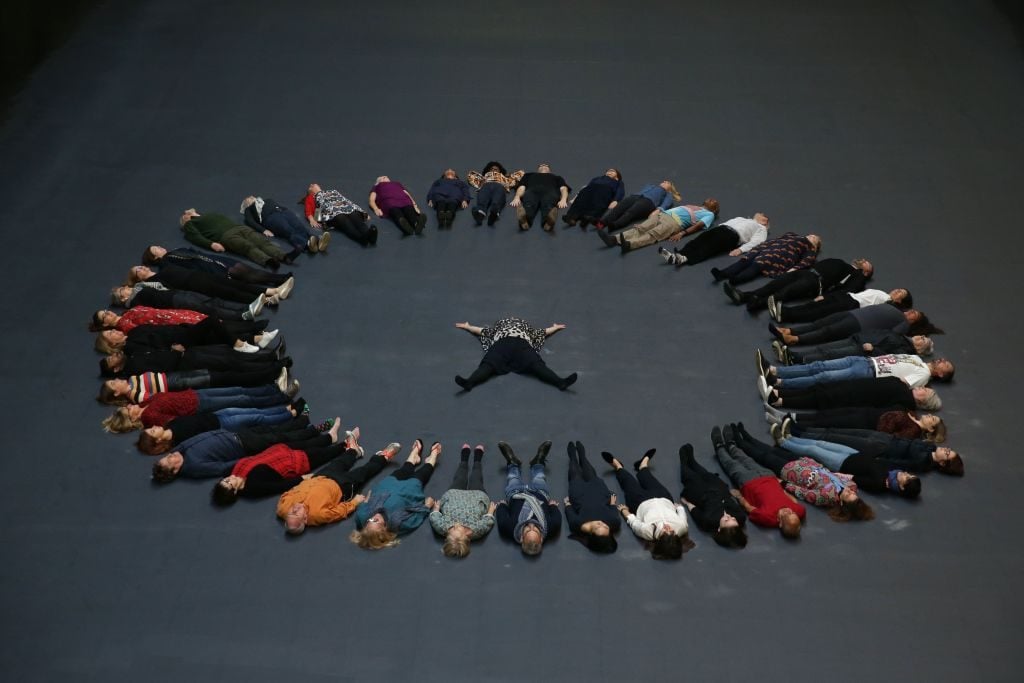
Cuban artist Tania Bruguera lies surrounded by volunteers in the Turbine Hall of the Tate Modern in London. Photo: Daniel Leal-Olivas/AFP via Getty Images.
The Show Can’t Go On
The success of a museum—and often, its director—tends to be measured by how many visitors spend money to pass through its galleries. And to get people through the door, many big institutions lean heavily on major loan exhibitions, like the Michelangelo drawings spectacular at the Metropolitan Museum of Art in 2017, and the Leonardo extravaganza at the Louvre that opened last October.
But even before the coronavirus hit and made such shows difficult to organize, if not impossible to execute, museum officials were warning that the mania for sprawling, mega-hit art exhibitions was problematic.
In February, Knol wrote a prescient complaint after pulling off “Young Rembrandt.” The “blockbuster addiction,” she wrote, is a “perverse system in which we are slowly entangling ourselves.”
“Blockbusters have been going on in some form since the 1980s,” she tells Artnet News. “At first, they were something that happened to a museum. Then, we slowly started marketing them and seeking them out, and eventually we depended on them. Now, museums are stuck in this web.”
“In the wake of the pandemic, that has been a disaster,” she adds. “We were all too heavily dependent on ticket sales.”
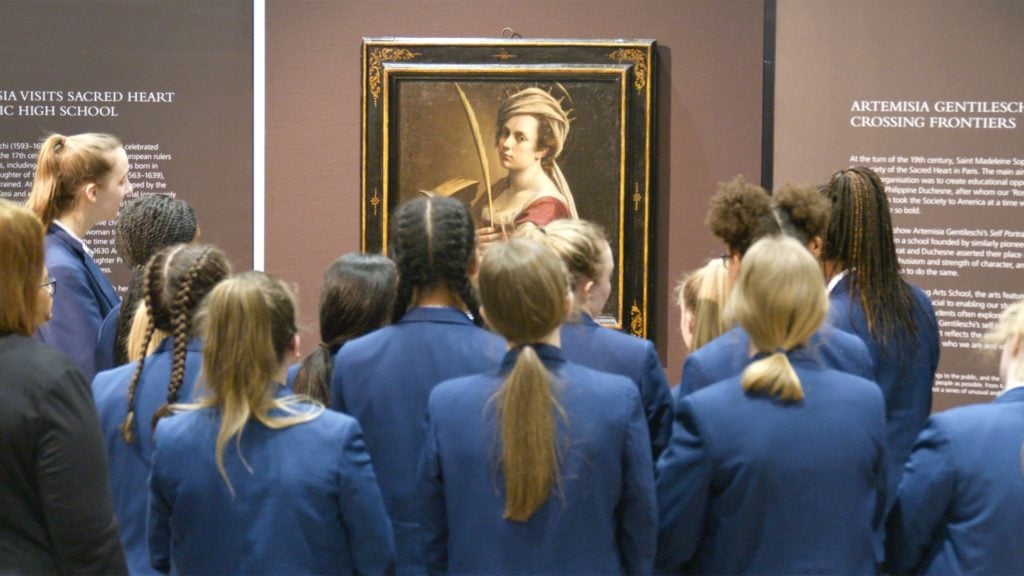
Students admire Artemisia Gentileschi, Self-Portrait as Saint Catherine of Alexandria (circa 1615-17). Photo courtesy of the National Gallery, London.
Blockbusters can take years to pull off. There are loans to negotiate, funds to raise, government applications to fill out, and complex shipping plans to arrange.
If ticket sales don’t go well—and if tourists in particular do not flock to the exhibitions—that can spell disaster for museums, which invest upward of $1 million for shows that are only up for a few months, and which demand tens of thousands of visitors if institutions are to recoup their investments. Knol’s “Young Rembrandt” show, for example, cost €1.2 million ($1.34 million) and demanded 37,000 ticket sales.
“There are enough people in any city for a Yayoi Kusama show, but a museum needs substantial income from ticket sales to execute shows of this scale,” says Stephanie Rosenthal, the director of the Gropius Bau in Berlin, which is planning a major Yayoi Kusama show that, for now, is set to open in September. The museum says it is still determining whether the show will be possible.
“In general, there is an expectation of a certain amount of visitors that is inherent to the planning of these exhibitions,” Rosenthal says. “These shows can bankrupt a museum if not planned properly.”
With widespread uncertainty about what the months ahead will look like, some institutions—like the National Gallery in London, which has indefinitely postponed a major survey of Artemisia Gentileschi—have opted to hit the pause button on their biggest projects.
“We will need to review our financial models, our dependence on private income and on international tourism, both of which will be severely disrupted,” says a National Gallery spokesperson, adding that the museum will “need to look very hard at the relationship between permanent collection and temporary exhibitions.”
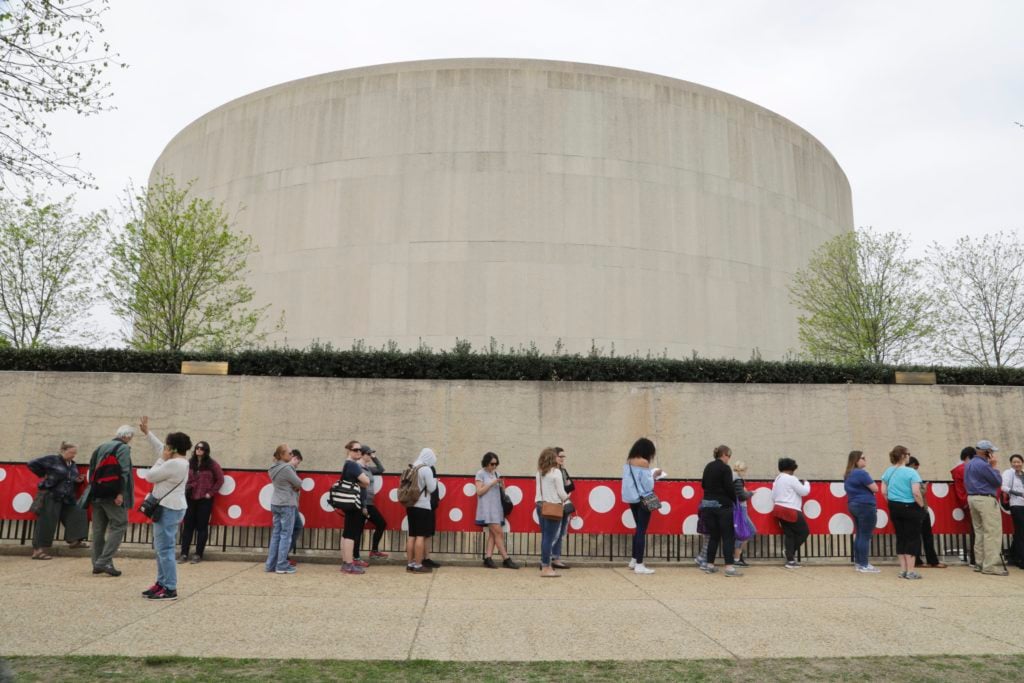
Hirshhorn Museum goers wait in line to see Kusama’s work, (2017). Photo by Cathy Carver. Courtesy of the Smithsonian.
A Logistical Nightmare
But even if museums can afford to invest in blockbusters, and are willing to take the gamble that ticket sales will be strong, there are other hurdles to clear.
“There is big insecurity at this moment for lenders, especially in the US. Japanese lenders understandably feel insecure as well,” Rosenthal says, alluding to the Gropius Bau’s forthcoming Kusama exhibition.
“To have an artist’s team traveling between two nations is complicated, considering the two-week mandatory quarantine,” she says, referring to the 14-day self-isolation period Germany demanded of international visitors until recently. (The mandate remains in place for several other countries.)
Travel restrictions have also hurt the shipping industry. When a highly valued work of art goes just about anywhere in the world, it travels like any celebrity would. From the moment it leaves its home, it is carefully watched and doted over by a trained courier, who acts as security guard and traveling registrar. Every movement, lift, turn, and hand that touches the object is observed and recorded by the eagle-eyed attendant.
But this industry-standard practice has been thrown into disarray by rising costs and shiftings demands for air travel.
“If I can’t provide museum couriers, lenders don’t feel comfortable,” says Fritz Dietl, the founder of the eponymous international logistics and art-shipping company. With travel bans, substantially reduced air traffic, and mandatory quarantines, couriers have not been able to move around as easily as before. And couriers, of course, have their own individual health concerns.
“We have loans that need to come back, entire shows even,” Dietl says. “But we cannot provide our usual standard of service.”
Dietl—who predicts a 30 percent contraction of the art-shipping market until at least 2023—hopes that museums and private clients will get on board with the replacement of human couriers with live camera feeds, which can monitor the condition of a crate as it travels around the globe and act as a virtual attendant.
Virtual couriers—which need no additional airfare, hotels, nor per diems—would be significantly cheaper than their human counterparts.
“Museum couriers were always a big part of the budget—we’re talking 10 to 20 business-class tickets for a large show,” Dietl says.
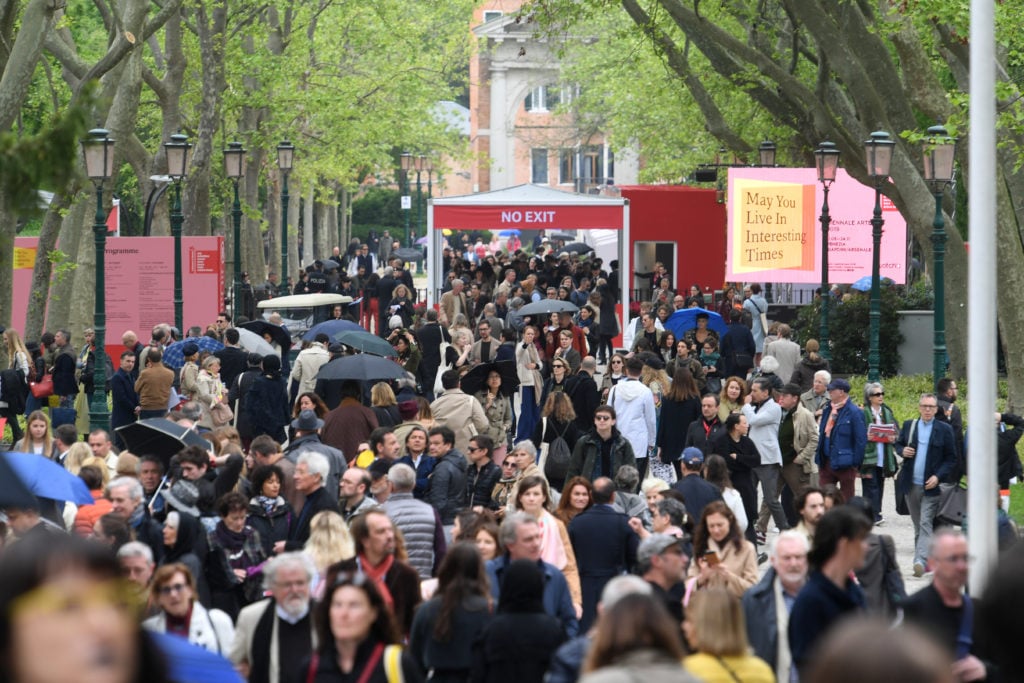
Throngs of people at the 2019 Venice Biennale. Photo by Felix Hörhager/picture alliance via Getty Images.
A Local Renaissance
Still, the worldwide lockdown has compelled museums to find new ways to work with lenders and one another, in part because they are taking the strict rules that normally govern loan agreements and tossing them out the window.
A spokesperson for K21 in Dusseldorf, which currently has a major show of wartime works by Pablo Picasso, tells Artnet News that the museum was able to extend the show, and its many loans, until the end of July.
But looking to the future, many museum officials say they want to focus more locally, on their own collections and surrounding communities.
“We have re-envisioned our program for the coming year,” says Thomas Campbell, the director and CEO of the Fine Arts Museums of San Francisco. The institution has moved a planned Judy Chicago retrospective to summer 2021, and a Pompeii exhibition from April to the fall.
Instead, it will present a juried invitational with artworks by Bay Area artists when it can reopen. (That date is yet to be determined.) Some 6,000 artists submitted 11,000 works for the show during a two-week open submission window.
“Although we know the exhibition schedule will be affected severely in the short term, I’m optimistic about the future,” he says. “There will be disruption to current norms for international art shipping and tourist attendance, but our mission remains constant, to connect our visitors with local and global art.”
Other museums are reading the political atmosphere and shifting their focus to reflect the worldwide mood: the National Gallery spokesperson says the London museum may begin staging showing that look at political and social issues.
“We have been offering distractions, but visitors are hungry for attention,” says Knol, the Lakenhal museum director. “We need to personalize the experience and it begins as soon as you walk through the door. You simply cannot do that when you are seeking the large, anonymous crowds that blockbuster exhibitions necessitate.”
